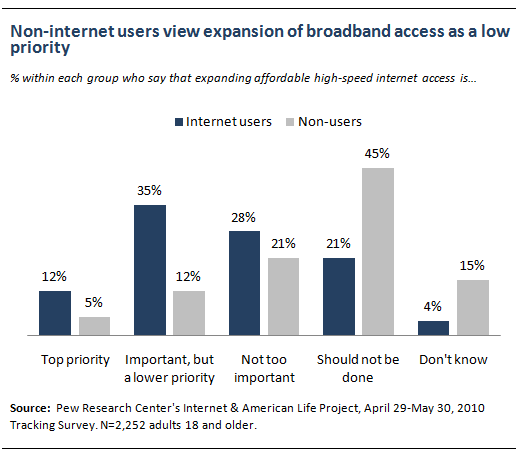I’d like to draw your attention to a recently released [GAO](https://docs.google.com/viewer?url=http://energycommerce.house.gov/Press_111/20101012/GAO.Report.Broadband.2010.pdf) report analyzing the challenge of implementing the 200+ recommendations included in the FCC’s Broadband Plan and comparing the U.S. to broadband efforts in other countries. Turns out things are not as dire as the FCC and the Administration would have us believe. Some highlights:
– Broadband internet is available to 95 percent of American households. This is comparable to other developed nations despite the U.S.’s larger geographic size and population.
– “[T]he United States has more subscribers than any other OECD country—81 million, or more than twice as many as Japan, which has 31 million, the second highest number of subscribers.”
– The U.S. broadband adoption rate is 26.4 subscriber lines per 100 inhabitants, which is higher than the 23.3 average for developed countries.
So we have more subscribers than any other developed nation by more than double, and almost all households have access to broadband. I know it’s not fashionable to say, but it looks like we’re doing pretty damn well.
This might explain the results of a Pew Internet and American Life [survey](http://pewresearch.org/databank/dailynumber/?NumberID=1071) released last month that found that “A majority of Americans (53%) do not believe that increasing the availability of affordable high-speed internet connections should be a federal government priority.” Interestingly, Americans who do not use the Internet are the least interested in seeing government spending on broadband—presumably for them. “Fully 45% of non-users say the government should not attempt to make affordable broadband available to everyone, just 5% say access should be a top priority.”


 The Technology Liberation Front is the tech policy blog dedicated to keeping politicians' hands off the 'net and everything else related to technology.
The Technology Liberation Front is the tech policy blog dedicated to keeping politicians' hands off the 'net and everything else related to technology.